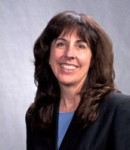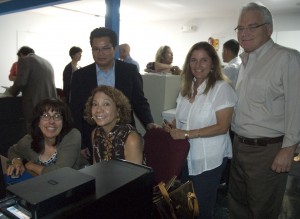For the last two years, students at California State University, Dominguez Hills and CSU Long Beach have been participating in a unique opportunity to gain field work experience through community-based service learning and hands-on research. The institutions, who signed a memo of understanding in 2008, have been creating the Cambodian Community History and Archive Project (CamCHAP). The project is directed by Susan Needham, professor and chair of anthropology at CSU Dominguez Hills, and Karen Quintiliani, assistant professor of anthropology at CSU Long Beach, with support from the Historical Society of Long Beach (HSLB), which has provided space in their offices for the physical archive and technical assistance for the online archive.

Last month, administrators from the participating institutions were given a tour of HSLB’s offices in Long Beach’s Bixby Knolls neighborhood in preparation of renewing the MOU and launching the completed online archive in spring of 2011. HSLB’s contributions to the project include housing the CamCHAP archive and technical assistance. The project was funded in part with a $20,000 grant from the California Council for the Humanities and $40,000 from the Long Beach Community Foundation.
University President Mildred García says that she would like to see the university become engaged in more projects like CamCHAP that collaborate with sister institutions and with local community.
“That’s really been one of our focuses at Dominguez Hills,” she says. “Sue is a role model to help others know that. The community is engaged in building, archiving, and bringing out their own histories in their own ways. When you engage community that way, they see the university as their university.”
“This project provides an enormous opportunity for Dominguez Hills… as a model for studies of other communities and how an archive can be implemented to provide valuable information to the community and scholars,” says Laura Robles, interim dean of the College of Natural and Behavioral Sciences.

For the last two years, students have participated in research, documentation, and presentation of the culture and experiences of war refugees who have made the Long Beach community of Cambodia Town, Inc. the largest enclave of Cambodians outside Southeast Asia. The next phase of CamCHAP is to launch an interactive website that has been created with the help of CSU Dominguez Hills undergraduate student Elsie Heredia and CSULB graduate students Sarah Cote, Adriana Vigil, and Julia Wignall. The online archive will feature more than 2,000 photographs and more than 1,500 documents in Khmer and English, including newspapers and unpublished manuscripts and reports from researchers, community members, and various organizations that are led by or serve the Cambodian community. Visitors to the site will be able to learn about myriad aspects of Cambodian culture and history, including the arts, business, demographic surveys, education, health, homeland relations, politics, religion, and events.
Needham and Quintiliani have been conducting ethnographic and linguistic research in Long Beach’s Cambodian community since 1988. They are currently completing a book on the establishment of Cambodia Town. Needham, whose students visit community members to scan their personal photos for CamCHAP’s archives, underscores the need to tell the story of Cambodians who fled to the United States in the wake of the Khmer Rouge regime of the 1970s.
“Most Cambodians who lived through the Khmer Rouge do not talk about what happened with their children,” says Needham. “Children, sensing the stress and emotional pain associated with that time, are reluctant to ask their parents about it. This means most children in the new generation don’t know what their parents lived through or why they left Cambodia. In short, they don’t know how they fit into either Cambodian or U.S. history. This part of U.S. history isn’t covered well in our schools and there are relatively few sources for this new generation to go to for information.”
Needham says that the CamCHAP project fills the information gap for both the older and younger generations. According to Quintiliani, this is the first time that the history of the Khmer Rouge will be available on the Internet. She says that many members of the community had connections to either one or both of the universities, a fact that helped CamCHAP gain trust and momentum.
“We didn’t want to create an archive project or an ethnohistorical representation of Cambodians without looking at what was already established in the community and what expertise we can build on… and create a stronger sense of community here in Long Beach based on the history of the Cambodians,” Quintiliani says.
Needham says that in establishing CamCHAP, she and Quintiliani have had to build not only a relationship with Cambodian residents of Long Beach, but also with the HSLB, city officials, nonprofit organizations, and local business stakeholders. She says that these efforts prove how educators can continue to give their students the best possible experience despite today’s financial challenges to education.
“All educators face the challenge of providing our students with an engaging and challenging learning environment with fewer and fewer resources,” says Needham. “Karen and I have found that collaboration with people committed to research and student learning through community engagement not only helps us accomplish this goal, it is extremely rewarding work. We are happy to share what we’ve learned with other researchers who are working in local ethnic communities and invite them to visit us at the [Long Beach] Historical Society to see what we’re doing there.”
Needham says that the experience that students gain by working with communities through projects like CamCHAP help them to “learn that communities are not homogenous, but are composed of people who, although they identify as part of the community, have differing perspectives on what is best for the group.
“They learn how to value and seek out all points of view and how to integrate these varying views into a more holistic and complex –and I think more interesting–understanding of people, their needs, and how to address these needs.”
For more information on the anthropology department at CSU Dominguez Hills, click here.